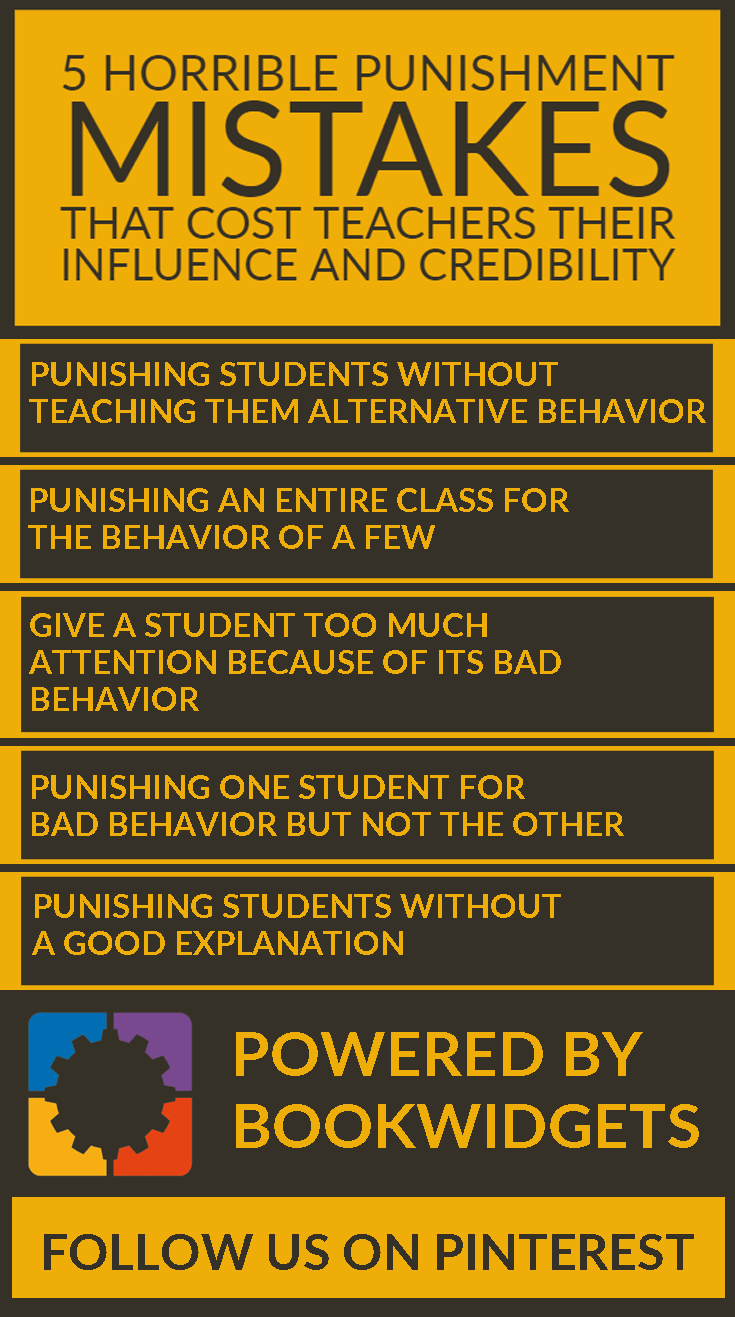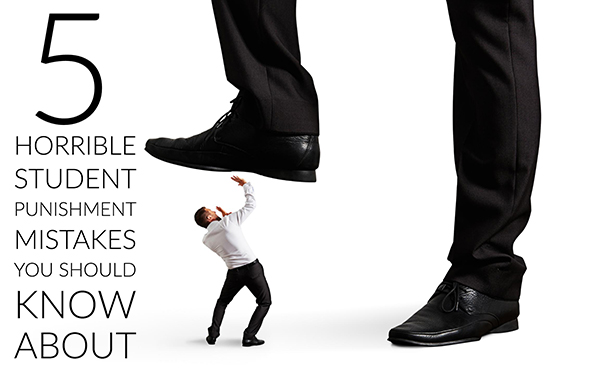5 Horrible punishment mistakes that cost teachers their influence and credibility
 Lucie Renard —
Lucie Renard —
There are times that a classroom can be like hell. Screaming kids, not paying any attention, not handing in their homework, etc.
In that case, teachers tend to punish the students in order to get control of their classroom. Punishment can work, but it easily slips through a teacher’s fingers. You really have to be able to get a handle on your students, without making any punishment mistakes.
Punishment is used in the classroom to decrease undesirable behavior. Implement punishment in your classroom management with care.
Reinforcement of good behavior should be the primary strategy utilized in the classroom, but if punishment is necessary, you better choose the least restrictive type of punishment.

5 punishment mistakes
1. Punishing students without teaching them alternative behavior
 When you punish a student, you could forget to show him the behavior you want to see instead of what the student is showing at that moment.
When you punish a student, you could forget to show him the behavior you want to see instead of what the student is showing at that moment.
If the student doesn’t know what kind of behavior you are expecting, he won’t change his behavior easily and will get confused. Your punishment will be useless and your influence will slowly seep away.
2. Punishing an entire class for the behavior of a few
 Keeping the whole class in for recess, deducting grades, or asking them to put their heads down can help to get unruly students temporarily under control.
Keeping the whole class in for recess, deducting grades, or asking them to put their heads down can help to get unruly students temporarily under control.
So what’s the problem? This punishment technique alienates your most well-behaved students. Holding everyone accountable when only a few are misbehaving creates resentment and will damage your influence.
This punishment technique also enforces bullying. When the whole class is punished instead of that one student, the class will get mad. And the other will feel guilty.
Students have so much going on in school that guilt and bullying can really bring someone down.
3. Give a student too much attention because of its bad behavior
 Students with bad behavior crave attention. For them, attention is a reward. And you are giving it to them by punishing. The attention reinforces their bad behavior.
Students with bad behavior crave attention. For them, attention is a reward. And you are giving it to them by punishing. The attention reinforces their bad behavior.
If you can’t give them attention, then what should you do?
Try to give them attention when they are on-task, when they do something good. I know this is hard, because students often have more patience than you. They will test your limits.
For other students, attention really is a punishment. Give that student your attention until he finishes his task. After that he will be “freed”.
4. Punishing one student for bad behavior but not the other
 Consistency is very important when it comes to punishing. It’s not fair to punish one student for its bad behavior, but not the other. It will cost your credibility and sow disarray.
Consistency is very important when it comes to punishing. It’s not fair to punish one student for its bad behavior, but not the other. It will cost your credibility and sow disarray.
Students will think that they are punished because of “being that student” and not because of their bad behavior. What else could it be, if the other wasn’t punished?
Another possible outcome is that students will speculate about favoritism. They won’t tell you that, but they will accuse their fellow student.
5. Punishing students without a good explanation

You can’t punish a student without telling him why. Saying “you should know why…” or “Use your head and think what the reason could be…” isn’t really helpful.
When students don’t know why they were punished, they’re not able to change their behavior.
It’s also valuable to find out what drives the misbehavior and work toward managing the environment to minimize factors that cause the behavior.
By identifying the students’ goals and misbehavior, you can present more appropriate methods to reach the students’ goals.
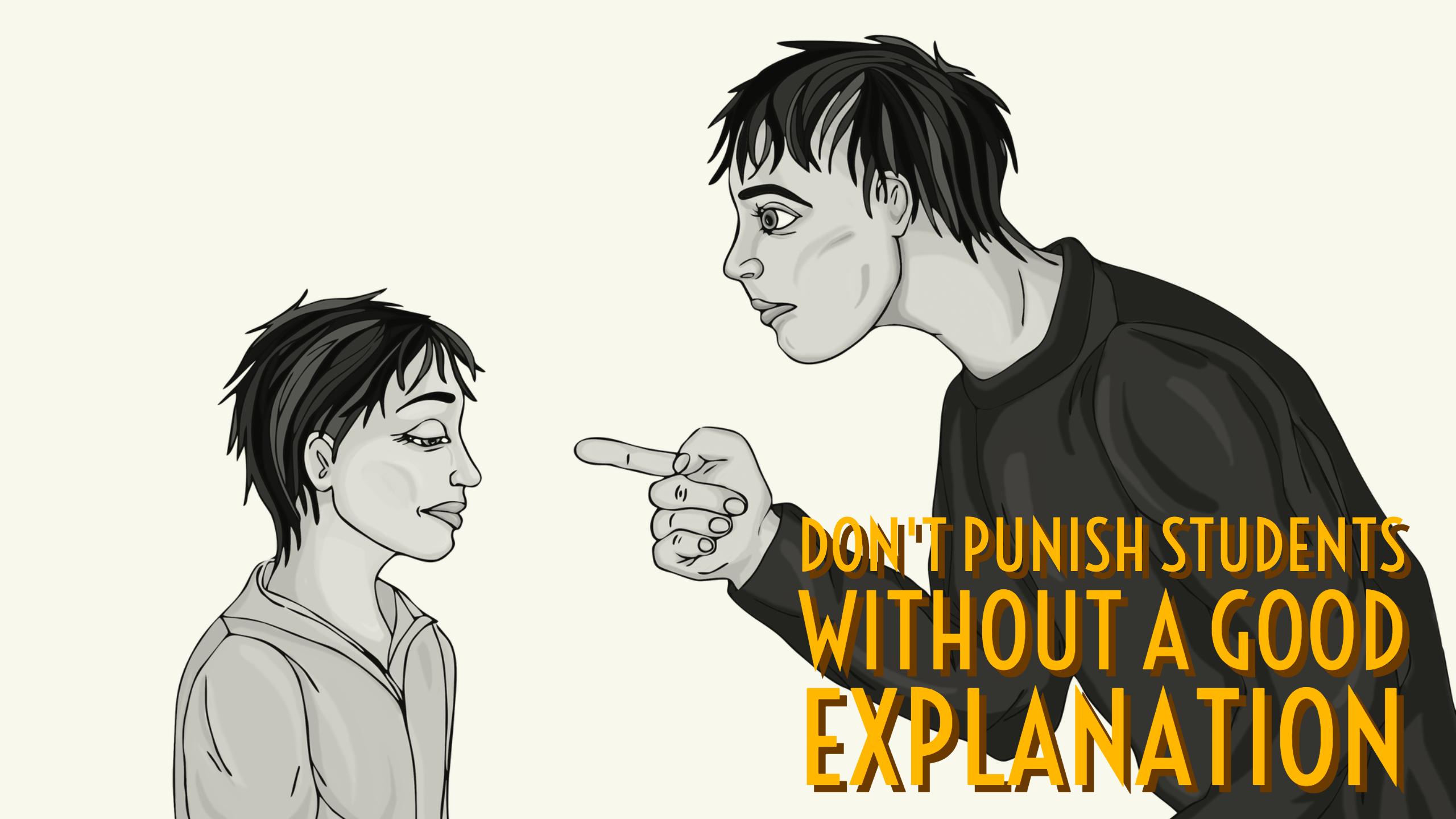

3 keys to using punishment effectively
1. Timing
 The punishment should be given as soon as possible after the inappropriate behavior. It should be as closely related to the misbehavior as possible.
The punishment should be given as soon as possible after the inappropriate behavior. It should be as closely related to the misbehavior as possible.
2. Intensity
 If punishments are too mild, they won’t be effective. The student will adapt and tolerate more intensive or extended punishments.
If punishments are too mild, they won’t be effective. The student will adapt and tolerate more intensive or extended punishments.
If too intense, punishments are not only abusive, but can also create other problems. An Australian study showed us that students who got suspended are more likely to show violence and aggression. You can be conservative when using punishing techniques, but make sure their intensity is appropriate.
3. Consistency
 Punishments also must be consistent and predictable in order to be effective. When punishing, you should return the student to the situation without expecting guilt. Make efforts to reassure or reinforce the student.
Punishments also must be consistent and predictable in order to be effective. When punishing, you should return the student to the situation without expecting guilt. Make efforts to reassure or reinforce the student.
Use a consistent schedule of punishments. Try to define a specific targeted behavior.
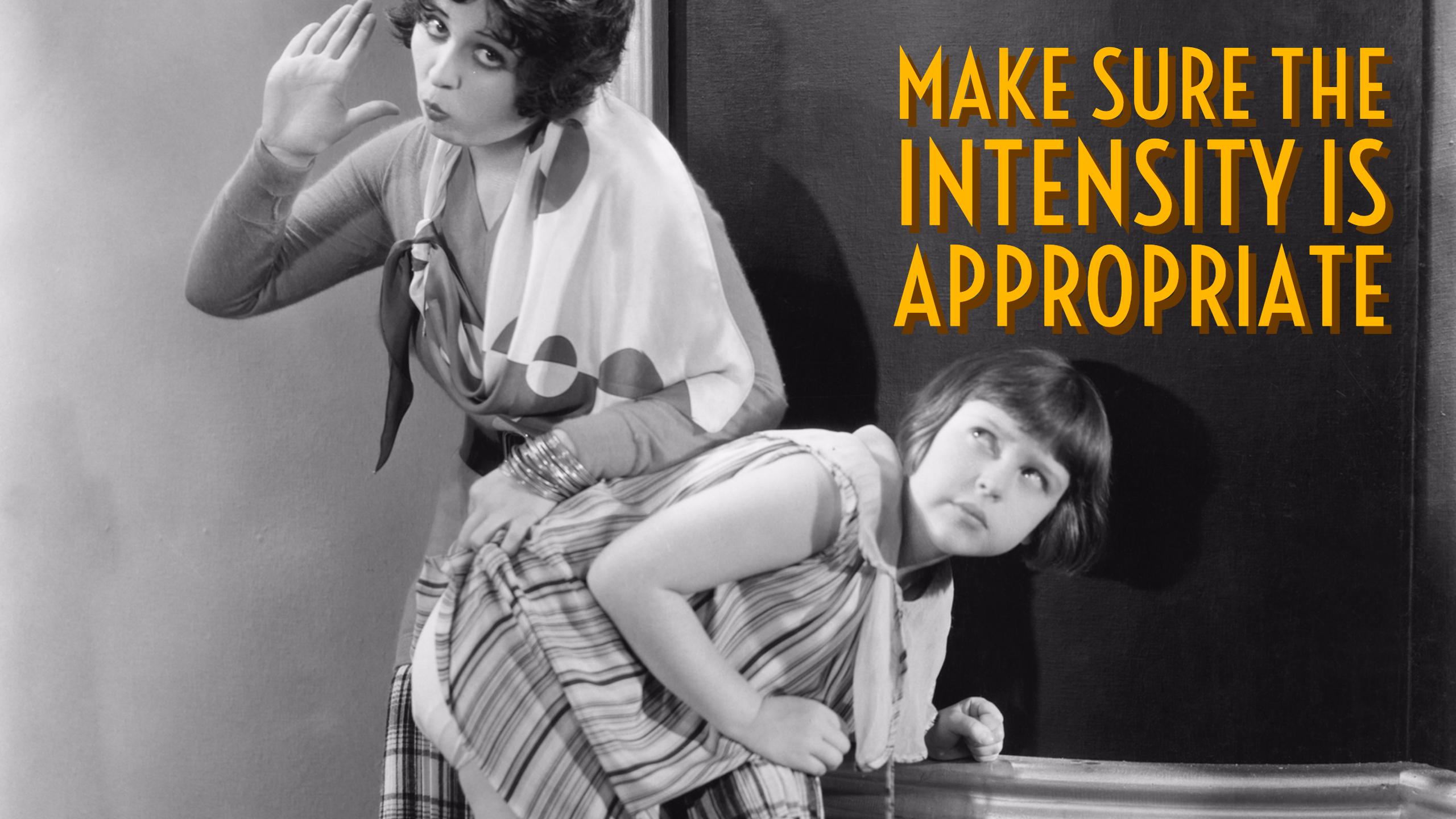

Guidelines for punishment
Follow these guidelines when punishing students:
- All students are aware of which behaviors are punished and how they are punished.
- Provide appropriate models for acceptable behavior.
- Offer punishment immediately, consistently, and fairly.
- Don’t get personal. Punishments are offered impersonally.
- A natural or logical consequence should be used as often as possible.
- The student must understand the relationship between his or her behavior and the punishment.

Punishments versus consequences
After learning from these 5 punishment mistakes, it might be the right time to answer this question: “Does punishment work?” The most important question, burning on the lips of every teacher. You’ve probably already noticed that it indeed works in some cases. In other cases it doesn’t.
Punishment works in two types of circumstances:
The first set of circumstances occurs when the teacher is present. Take this example: replace the teacher with a police officer. So, you are driving and you see the police officer. Your reaction: you slow down! The real threat of punishment caused you to slow down and drive within the speed limit. But what happens once the police officer is no longer in sight? Yes, you’re right. Pedal to the metal! (Seriously though, don’t do that)
The second set of circumstances occurs when the punishment is so severe and intense, that it debilitates you in some way. So, after your $50,000 ticket and a year prohibition from driving, you have been so severely pained that you will never speed again. Hopefully.
Watch out for that last one. That doesn’t mean that you have to punish intensely. Intense punishments lead to other problems.
There’s something else you can do: give meaningful consequences. A meaningful consequence sounds a lot like a punishment. There is a big difference, though.
With punishment, you give a student an unpleasant experience to make him stop behaving in a certain way. With meaningful consequences, a student takes responsibility for the outcomes of his bad behavior. A student who sticks a chewing gum under the school desk won’t be sent to the principal, but he can start cleaning the desks instead. His chewing gum might be taken away unless he promises to only use it outside the classroom/school.
Punishments equal pairing pain with some unwanted behavior. Meaningful consequences link a child’s behavior to the broken rule in a meaningful way.
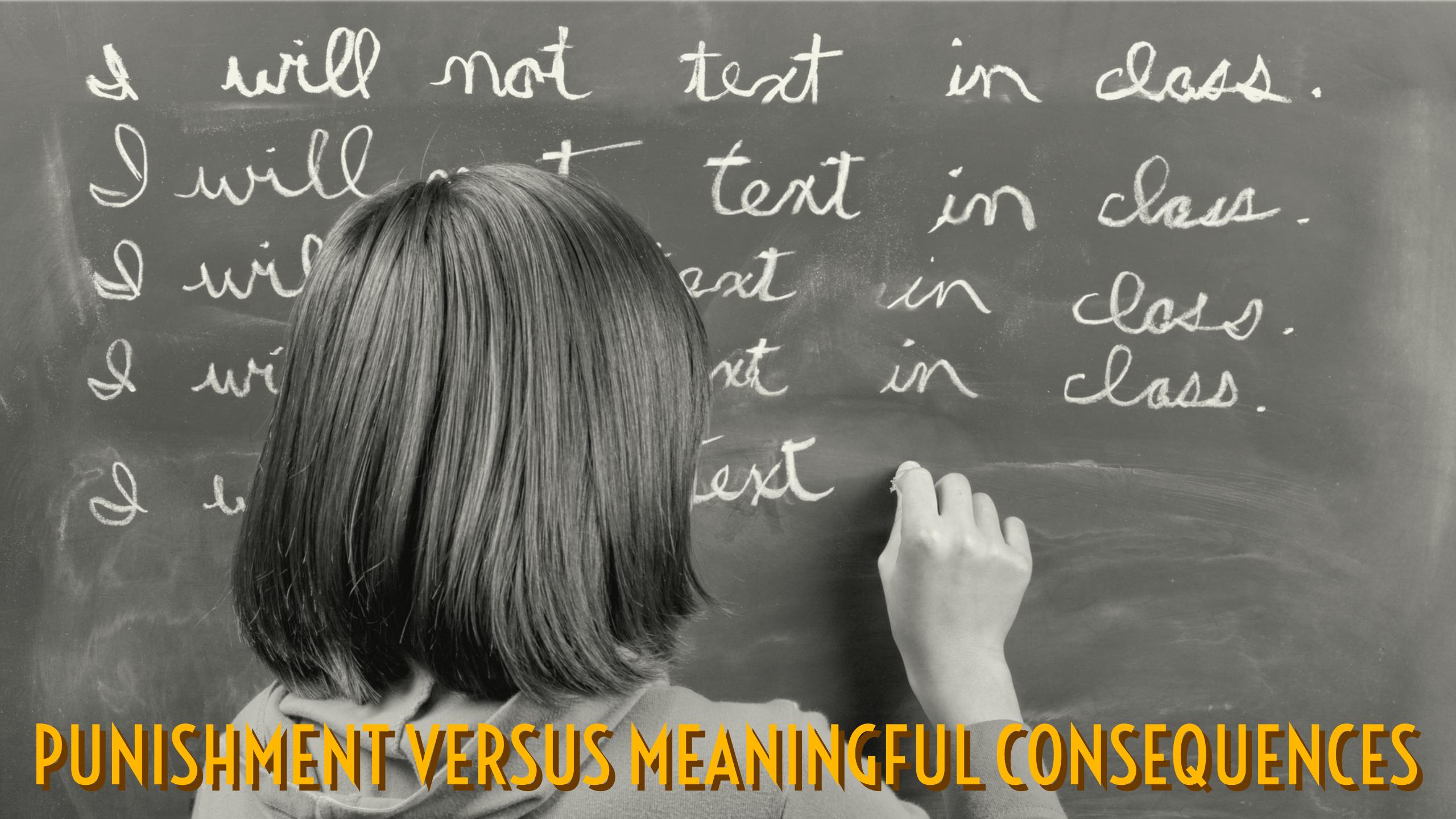

Reward systems that work
Besides punishing students or giving them meaningful consequences, you can just simply reward your students too. Take a look at this blog post about reward systems.
Wrap up
The mentioned punishment errors highlight the importance of clear communication, consistency, and thoughtful consequences. By prioritizing positive reinforcement and fair treatment, you, the teacher, can maintain your influence and credibility while fostering a supportive and respectful learning environment.
Curious for more teacher tips? Stay updated with our latest blog posts by following us on Twitter. Explore our Teaching with BookWidgets Facebook group for teaching inspiration.
I’m Lucie - let’s connect on LikedIn!
